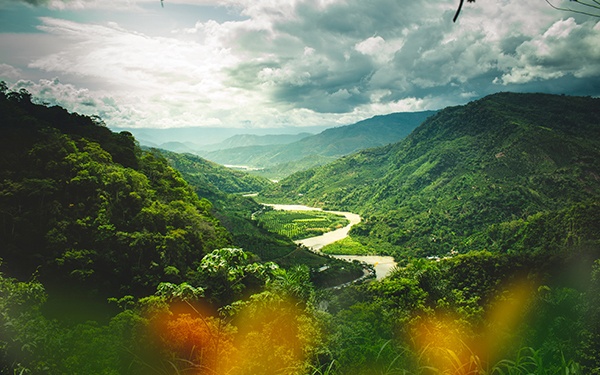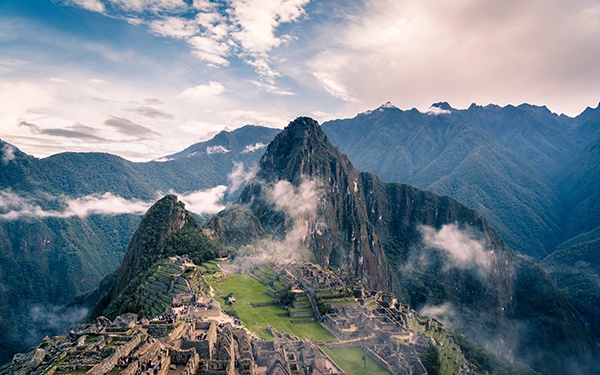Thinking about moving to Peru from the UK?
The historical and cultural phenomena of mythic Machu Picchu immediately springs to mind when we think of Peru, but whilst a visit to those ancient Inca ruins is an undeniably unforgettable experience, this intriguing country has much more to offer.
A unique history and culture of lost civilisation, staggering scenery, inspiring museums, adventure in the depths of the Amazon jungle, rafting on wild rivers, flamboyant festivals steeped in traditional… the list goes on.
But what is life like in Peru as an expat?
Discover more in our move to Peru guide for Brits…
Contents
Peru Visa Requirements for Brits
Visiting
UK citizens are fortunate in the fact that for short stays of up to 90 days, no visa is required to visit Peru.
For visits any longer than that — up to a maximum of 183 days — it is necessary to apply for a tourist visa. All visa applications are processed in the country’s capital city Lima.
Working
If you are an expat who has already secured an offer of employment with a duration of 12 months of more from a Peruvian company that has been approved by the Peruvian Labor Ministry, it is possible to apply for your work permit which is the only way you are able to work legally.
Employment contracts must be written in Spanish, and if you are already in Peru on a tourist visa you will need to complete a ‘permiso para firmar contratos’ document which grants you permission to legally sign contracts whilst in the country.
Your signed contract must then be approved by the Peruvian Labor Ministry before your work visa can be granted.
It is also possible for expats to set up their own business directly and be self employed provided there is an annual turnover that provides you with a salary of at least US$12,000 per year.
This method also qualifies you to receive a valid work visa. Work visas are valid for 1 year, and are renewable provided your place of employment remains the same.
Permanent Residency
Expats who have been legally living and working in Peru for a period of 3 years or more can apply for a permanent residency permit which allows them to continue to live and work there indefinitely.
Citizenship can be attained after legally living and working in Peru for a period of just 2 years, provided that it can be proved that you have ties to the country, such as rental or purchase of residential property, that you have been residing there during the whole 2 year period, and that you have knowledge of the Spanish language and the culture and values of Peru.
Way of Life in Peru
Lifestyle
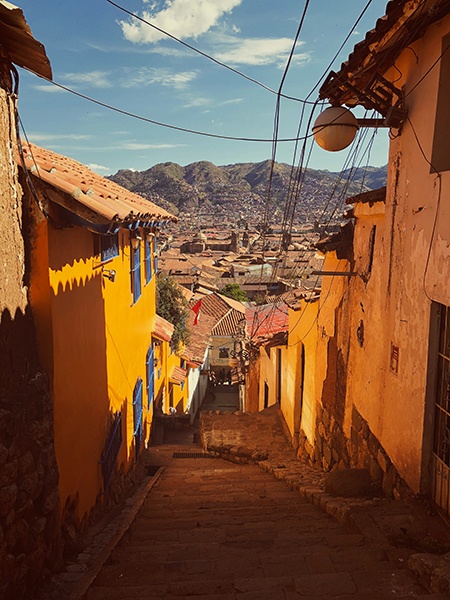
Peru offers expats the chance to immerse themselves in a country with a rich heritage, an extraordinary natural landscape, and a diverse, multicultural population, where life can be as laid back or exciting as you choose, but being an expat in Peru is not without its challenges.
The coexistence of people from so many different backgrounds including the indigenous peoples, Europeans, Amerindians, and east Asians has served to enrich Peruvian culture even further.
The main language spoken is Spanish, which Brits are well advised to learn if they want to make the most of life and blend in with the local community as seamlessly as possible.
Folklore and tradition are intrinsic to the Peruvian way of life, and vibrant festivals take place throughout the year.
Peruvian cuisine varies from region to region, but there is always an abundance of fresh local produce, fabulous open air markets, and increasingly more Peruvian haute cuisine is emerging in the form of fancy restaurants.
Food, family, and music are very important to the way of life, and the Peruvian people are very friendly and sociable. Roman Catholicism is the predominant religion, but indigenous religion is still widely practised – particularly in rural areas — and shamans and traditional healers are still greatly respected.
Big cities are modern, with Lima in particular attracting large numbers of expats, and offer an inexpensive, laidback lifestyle and availability of familiar amenities.
Getting Around
Peru has a fairly good transport infrastructure, but the unpredictable climate and challenging mountain and jungle terrain can sometimes pose problems to getting around.
On the whole however, public transport in Peru offers a range of options and is very cheap.
It’s a great advantage that cities and many towns have airports and regular domestic flights, although in the case of the latter — especially in more remote areas — propeller planes tend to be used rather than modern jets, as airports are often nothing more than a dirt runway. Connections through Lima are often necessary to access many areas. Flights are generally relatively affordable but should be booked at least a few days in advance, and are frequently subject to timetable changes and cancellations.
For those who prefer to keep their feet on firm ground, there are several options.
Buses are very cheap and are the best way to get more off the beaten track. This is the most popular mode of transport among Peruvians, and a good option for travelling long distance. There are numerous different private bus companies offering different schedules and qualities of service at varied yet competitive prices, and it is often worth paying just a little more to travel in greater safety and comfort. Be aware that buses are often delayed or cancelled if bad weather necessitates, and it is advised to avoid travelling on overnight buses.
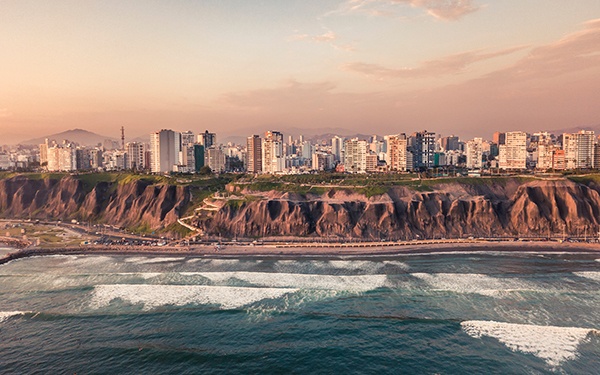
If you choose to travel by train, you’re in luck. Peru has some of the most scenic train routes in the world, the most impressive of which is that which connects Cusco to Machu Picchu, however trains are not commonly used as a practical way to get from A to B. Journeys are slow and can be a little rough due to the rugged terrain, and routes are limited. If you do decide to embark on a scenic train ride, splash out a first class carriage as thefts do occur in economy class.
For exploring less accessible jungle territory official tour operators offer Amazon River cruises, or it is also possible to travel Peru’s lakes and rivers by cargo boat or by hiring a motorised canoe and driver.
Getting around towns and cities is best done either on foot or by taking a taxi. Official taxis are more expensive than private cabs, but are safer, however they can’t be flagged down in the street and must be called for in advance. Fares aren’t metered so be sure to agree on a price beforehand.
Taking the bus in town is another option, although be prepared that local buses are nearly always overcrowded and very slow — although they are very cheap.
Driving in Peru
Travelling long distances by car in Peru is not the best option as driving conditions can be hazardous and road conditions poor.
However for shorter trips in a particular driving can be a convenient if expensive option.
You must be at least 25 years of age to hire a car, and have a valid driving license and passport. You can find big car hire companies in Lima and other major cities and towns, but choose your vehicle carefully as the condition of rental cars is often below par.
Other drivers are often aggressive and have little respect for other road users, so keep your wits about you, avoid driving at night as it can be dangerous, and always park your car in a secure car park as theft is common if cars are just left on the street.
Also be aware that there aren’t that many petrol stations and the price of fuel can be expensive.
Weather in Peru
Peru’s geographical diversity with mountains areas, rainforest, and the coast, means that the country’s climate varies dramatically from place to place.
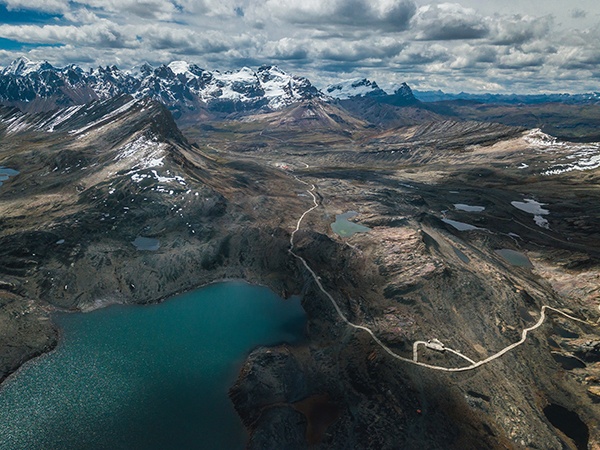
Along the coast temperature remain fairly stable all year round, averaging between 18°C to 24°C, but with very little rain, resulting in much of the terrain being desert. The coastal winter lasts from June to September, during which time the weather is grey and a little damp.
The Andean mountains which separate the coast from the rainforest have an altogether different climate, with perpetual snow in the areas with the highest altitude such as the country’s highest peak, Huascarán.
The Andean Plateau to the south is the area with the lowest altitude, and gives sunny weather from June to September with daytime temperatures of around 24°C, very little rain, but chilly nights. September to May in this area brings the rainy season and it can be dangerous to be on the mountains during this period.
The Amazon rainforest is hot and humid nearly all year round. From November to March it rains frequently, but the rest of the year it remains fairly dry.
Cost of Living in Peru
Lifestyle
Overall Peru is one of the least expensive countries to live in South America.
The capital city Lima is the most expensive location, but it still remains affordable for expats.
Smaller towns and rural areas are far cheaper, but offer less in the way of amenities and comforts.
Overall, groceries are inexpensive — particularly if you avoid the supermarkets and shop in Peru’s fresh food markets. Public transport is cheap, although running a vehicle can be expensive.
Eating out at local restaurants certainly won’t break the bank as you can eat well for as little as $5, although naturally you can expect to pay much higher prices for a 3 course meal at a high class restaurant.
Utilities including electricity, gas, and water, are reasonably affordable, but electronic goods can be quite pricey.
Take a look at this video for a good idea of the cost of living in Peru:
Rent
The biggest part of any expat’s budget when living in Peru is monthly rent. Costs vary wildly depending on where in the country you choose to be.
Apartments and housing in Lima are the most expensive, but still far cheaper than in London.
On average, rental prices in Peru are at least half the price of those in the UK. There is a wide variety of housing options including apartments, individual family homes, and smaller suburban housing.
Healthcare
Public healthcare in Peru is hugely underfunded and of a poor standard with long waiting times for treatment.
Private clinics which provide a higher standard of medical care can be found in big cities such as Lima and Cusco, but most expect upfront payment.
It is strongly advised that expats living in Peru take out a private healthcare plan to cover costs which also pays out in the event of a serious medical emergency which requires evacuation to another country with better facilities.
Schooling
Public education in Peru has a very poor reputation. Classes are overcrowded, teachers are underpaid and the overall standard of education is well below that of the UK.
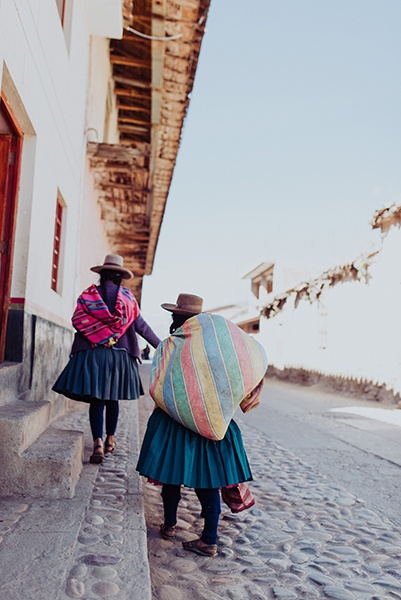
As a result the majority of expats living in Peru prefer to send their children to an international school. There are good quality English schools in both Lima and Arequipa, but the drawback is that they are expensive.
Average monthly fees start at around 1000 Peruvian soles, which equates to roughly £230, but can be as much as £1200 depending on the educational establishment.
Popular Areas for Brits
Lima
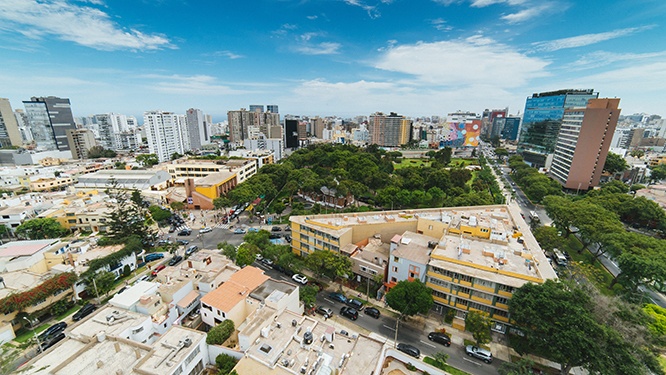
Lima is an intoxicating and somewhat chaotic hotchpotch of different cultures, with a stark division between rich and poor.
It is home to around 10 million people, some of whom live in luxury and enjoy the best of the sophistication that the city has to offer, and many of whom sadly scrape together an existence in the city slums.
That said, this seafront city is bursting with sights and entertainments for all budgets, with ancient temples and colonial architecture to explore, museums bursting with cultural riches, world class restaurants and incredible street food, bustling markets, and buzzing nightlife.
Trujillo

Trujillo makes a bold impression with its brightly painted grand colonial buildings which line the streets and elegant churches, but the city’s biggest draw is its proximity to an abundance of fascinating pre-Colombian ruins in the surrounding areas, including the ancient city of Chan Chan and the temples Huaca Esmeralda, Huaca Arco Iris, and Huaca de la Luna which date to over 1500 years old.
It’s also just a short hop from the charming fishing village of Huanchaco, a pretty and popular place to surf and laze on the beach.
Arequipa
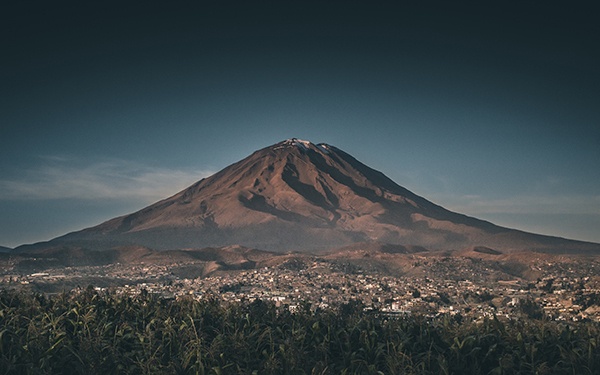
Arequipa has also come to be known as the White City due to the wealth of glorious white stone baroque architecture, of which the majestic cathedral is its outstanding gem.
Popular with expats, Peru’s second largest city is undeniably beautiful, and its dramatic setting in a valley surrounded by volcanic peaks is not only physically arresting, it is also an ideal starting point for many activities such as white water rafting, and trekking.
For foodies Arequipa is gastronomic heaven. It is renowned for its sensational, innovative restaurants which offer some of Peru’s tastiest fusion cuisine.
Cusco
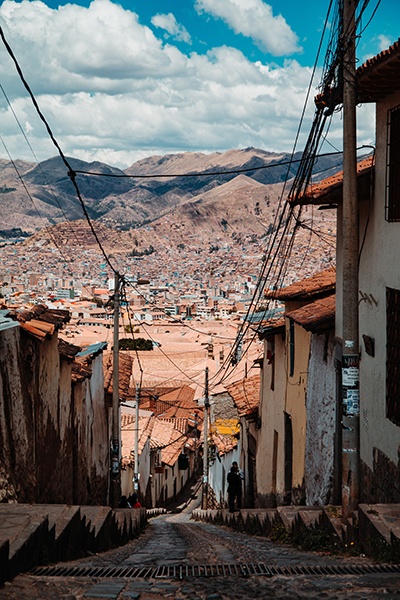
The gateway to one of the wonders of the world – the infamous ruins of Machu Picchu, Cusco is a cosmopolitan city which thrums to the beat of tourist feet, but is nevertheless enchanting.
A large part of the city is a UNESCO World Heritage site, and the Cusco as a whole boasts cultural riches from its many different lives, from Inca temples to Spanish colonial mansions and cathedrals.
Chiclayo
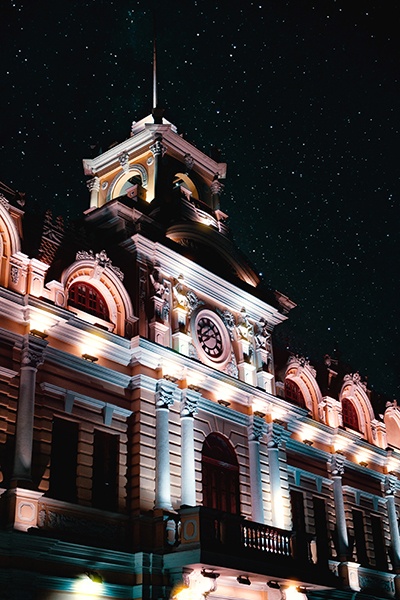
Chiclayo can be found on Peru’s northern coast. This small but prosperous city was founded in the 16th century by Spanish missionaries as a strategic point along many different trade routes.
Today Chiclayo is a warm and welcoming city with a pleasant plaza, vibrant markets, captivating museums, and some fabulous restaurants. It’s also just a stones throw away from a host of ancient burial sites.
Iquitos
Iquitos is a city unlike any other in Peru. Its remote location in the Amazon jungle can only be reached by boat or plane, and it is the launching pad for all kinds of rainforest adventures.
But Iquitos is far from primitive. Indigenous culture sits alongside fine European mansions, thriving markets, exciting nightspots, modern, chic cafés and top notch restaurants – and all with a jaw dropping rainforest backdrop.
Jobs in Peru for British Expats
Peru’s economy is fast growing, and relies heavily on trade and tourism, which opens up reasonable employment opportunities for expats — from ecotourism to gastronomy and everything in between.
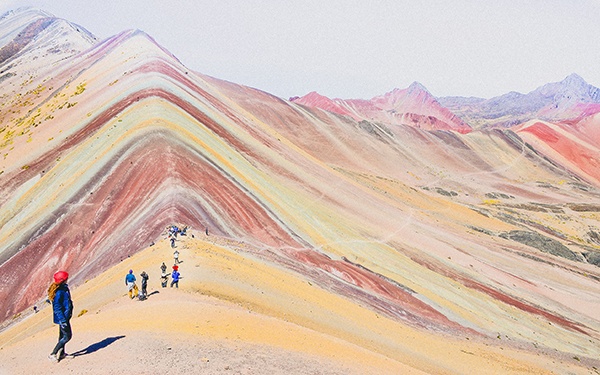
The banking and finance sectors are also a possibility for expats relocating to Lima.
Most expats tend to find employment with international companies rather than local Peruvian businesses, and it’s a good idea to be flexible regarding where in Peru you are willing to work and live, as some industries have far more job opportunities in certain areas.
Still considering a move to Peru?

